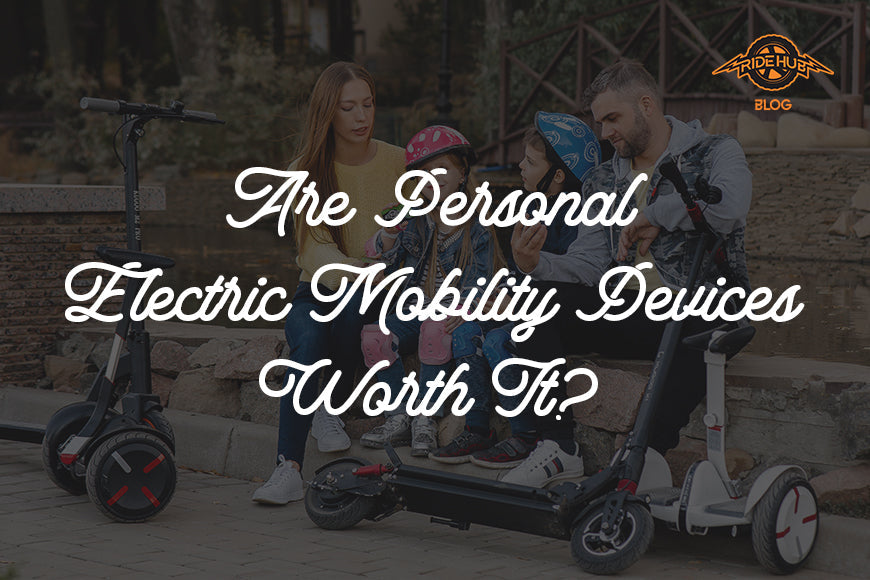
Micro-mobile transport is slowly becoming the norm in city streets across the globe. In a nutshell, micro mobility refers to vehicles that are designed to transport individuals over short distances. That’s why these vehicles are perfect as first and last-mile transport. These personal electric mobility devices usually include electric scooters, electric bikes, e-skateboards, hoverboards, and more. These devices aim to make commuting easier, especially for those dwelling in cities.
Safety concerns
Unfortunately, despite its convenience and efficiency, many people hesitate to buy a personal mobility vehicle. After all, there are several reports of accidents and injuries due to these devices.
E-scooter
For example, a Henry Ford Health System found that there has been a rise in head and neck injuries due to e-scooters since ridesharing systems were launched in 2017. Meanwhile, in a safety research study, data showed that most e-scooter accidents involve cars and ground obstacles such as curbs, poles, and manhole covers. However, since their launch, many e-scooter ride-sharing platforms and e-scooter manufacturers have been addressing safety issues to create safer commutes for riders.
E-skateboard
One safety concern for e-skateboards is the fact that riders are exposed to external factors when riding and have no handles to hold for balance. Aside from this, e-skateboard riders are at risk of losing braking power when they encounter system errors, low torque at high RPM, and regen energy overload. Moreover, going over the max speed, especially when going downhill, can be very risky and unsafe. However, this can be avoided as long as riders don't go near or over the max speed and ride safely.
E-bikes
E-bikes are generally safe as long as it’s ridden responsibly. The only concern that some riders have with e-bikes is that the Lithium batteries in e-bikes are highly combustible. This usually happens when the batteries are not cared for properly. Fortunately, 80% of battery combustion can be avoided if riders take proper care and precautions. Moreover, e-bike riders shouldn’t worry too much as manufacturers are continuously developing safer battery technology.
Overall, there are still safety concerns that these micro mobile transports need to address. However, manufacturers are continuously studying and improving models to make them safer, more efficient, and more affordable for consumers.
The benefits of riding personal electric mobility devices
Despite the safety concerns over PEMDs, commuters gain several benefits from riding them.
1. PEMDs serve as a first and last-mile transport
As mentioned, personal electric transports are perfect as first and last-mile transports. This means people can use them when commuting between your home to the subway station and vice versa. In urban cities and even in suburbs, travelling between your home to the nearest public transportation becomes a challenge. After all, it’s often too short for riding a car and too long for walking. PEMDs solve this by providing a quick and light commuting solution.
2. They are quick and efficient modes of transportation
Since e-bikes, e-scooters, and e-skateboards have slim and portable bodies, it makes it easy for riders to bypass traffic or go to narrow but shorter routes. As a result, you get to your destination faster. Aside from this, it’s a transport device that doesn’t usually need a license. Depending on where you live, most states and countries don’t require a license to ride e-scooters, e-bikes, and e-skateboards. So, when you choose to ride a shared e-scooter or e-bike, you can easily grab them and go.
3. They offer affordable transport
Riding shared e-scooter platforms usually cost a dollar plus around $0.40 per minute. So, if you ride for 10 minutes to and from your destination in one day, that’s a total of $10 for your commute. The cost is slightly similar to riding public transportation but you don’t get to sit and wait for traffic. Mobility devices offer efficiency and convenience, making them a worthwhile investment when commuting.
4. They help reduce air pollution
PEMDs have become popular mainly because of their environmental benefits. Since these electric mobility devices don’t need fuel and don’t emit any harmful gases, they become a sustainable option for light personal travelling. Ideally, these devices aim to replace cars to help lessen carbon emissions from road transportation. After all, road transportation is one of the highest contributors to carbon emissions in the transportation sector. By encouraging more PEMDs in the streets, it offers people a sustainable way of travelling.
5. They promote smart cities
Legalising and implementing personal and shared transporters like e-scooters will make cities more efficient and convenient for city dwellers. It also promotes smart cities where transport is not only greener but interconnected, making it easy to travel within a city. Overall, this can also contribute to the overall economy of cities. After all, more people have access to education and work opportunities. Moreover, there will be fewer cars on the road, which will make travelling faster and more convenient.
Are personal electric mobility devices worth it?
Electric scooters, e-bikes, e-skateboards, and more all have their pros and cons. There may still be safety concerns over the products, but manufacturers are constantly developing models to keep them safe for riders. Moreover, legislators and organisations are still studying the safety of these micro-mobile devices. Once there are proper guidelines implemented, it could help increase rider safety.







